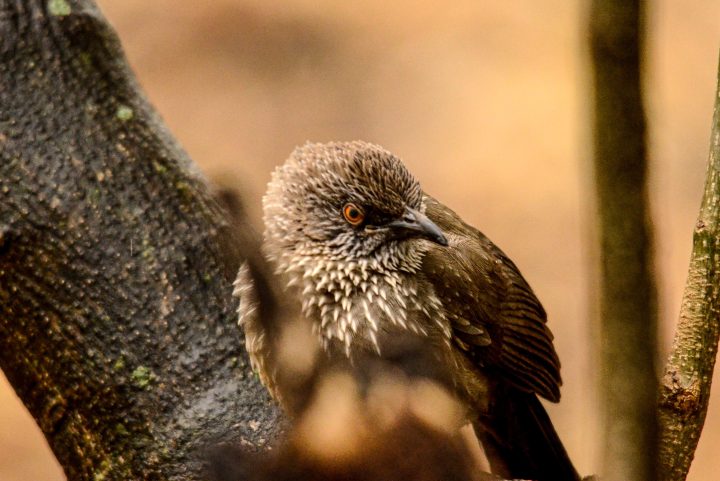
Arrow-marked babblers, barbets, bulbuls and starlings congregate at mealtimes when 'students' break from lessons or return from a bush walk. (Photo: Angus Begg)
By Angus Begg | 11 Sep 2023
The immersive 14-day course at the national park’s Makuleke Concession is designed for those who dreamt of being a guide as a child, but life interrupted. Or for those who simply want to better enjoy and understand the bush on their next visit.
_____________________________________________________________________________________________________________________________
Observing a breeding herd of 100-plus elephants from a seat on a fallen log, feeding and socialising its way through a Pafuri fever tree forest at sunset, with ubiquitous trumpeting and youngsters playing in the dust, is surely one of the great Kruger Park experiences.
Seated alongside me on the decomposing fever tree were three other course attendees, our armed lead guide-cum-instructor and a backup guide. We were on day two of a two-week immersion course into the landscape and wildlife of the Makuleke Concession in the far Kruger Park, conducted in a camp beneath towering mashatu – aka nyala berry – trees, 5km from what in winter is the mostly dry Limpopo riverbed.
Welcome to the wilderness
Our first morning was somewhat fresh — “beanie” weather, just shy of producing frosted vapour breath.
With the typical Pafuri winter-daytime temperature of 28˚C forecast, I followed the clothing lead set by Jasper Visser, our Waterberg-based instructor.
Visser has lived in this rustic camp for five years, running courses to train youngsters who aim to become full-time guides, as well as mid-career types like myself who want to deep-dive into the bush for a while, emerging with a head packed with bush lore and socks infested with blackjacks.
“It’s worth putting up with the cold for a bit,” says Visser, “otherwise there’s too much to carry when you take it all off.” On day three it was clear that he was feeling the chill that had blown down with ferocity from the snowy gardens of Joburg, as he spent the day in his tracksuit pants.
Our first morning walk — 12,000 steps, says the cellphone, which doubles up as a camera — follows no path, and speaks to the majesty of a fever tree forest. Not the same forest where we encountered the breeding herd, this one is about 800m from the Zimbabwe of distant Sunday morning drums on the other side of the dry Limpopo riverbed, a long swathe of wilderness, birdsong and magnificence.
Weaving between trees and thick bush, prime leopard country, senses need to be on high alert, with an ear cupped to catch the call of a scaly-throated honeyguide or the tell-tale crack of an elephant breaking a branch. Senses work overtime as darkness approaches, when the barn swallows of daylight are replaced by the epauletted fruit bats of the night.
Or was it just a bog-standard insectivorous bat that screeched past the vehicle while Dominik LeCroix, our backup guide and driver, attempted a three-point turn in between a nyala berry, a sycamore fig and a cluster of bushwillows?
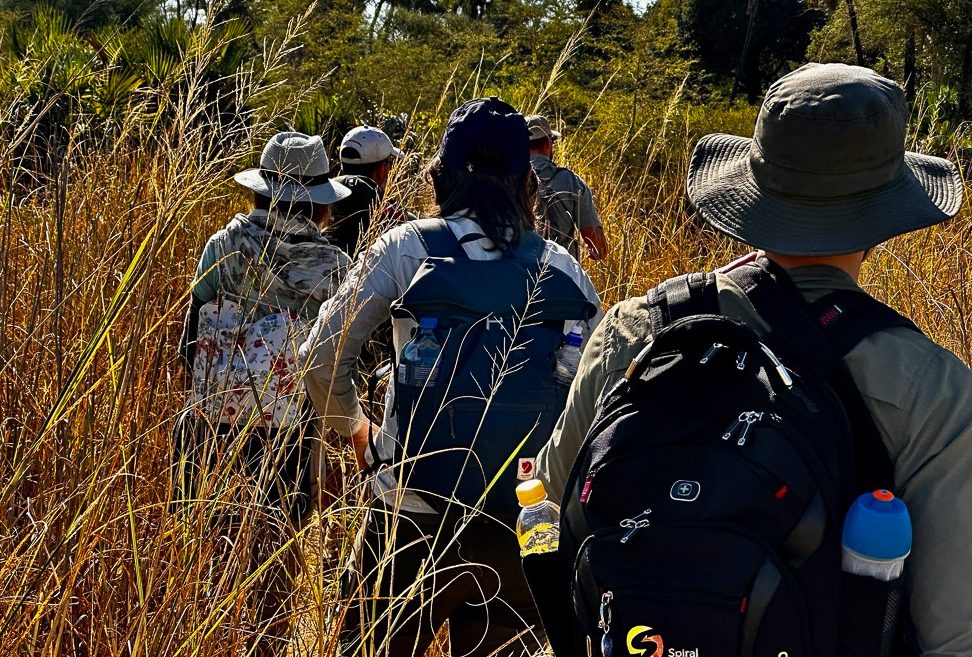
Approaching a fever tree forest, with the Limpopo and Zimbabwe just on the other side. (Photo: Angus Begg)
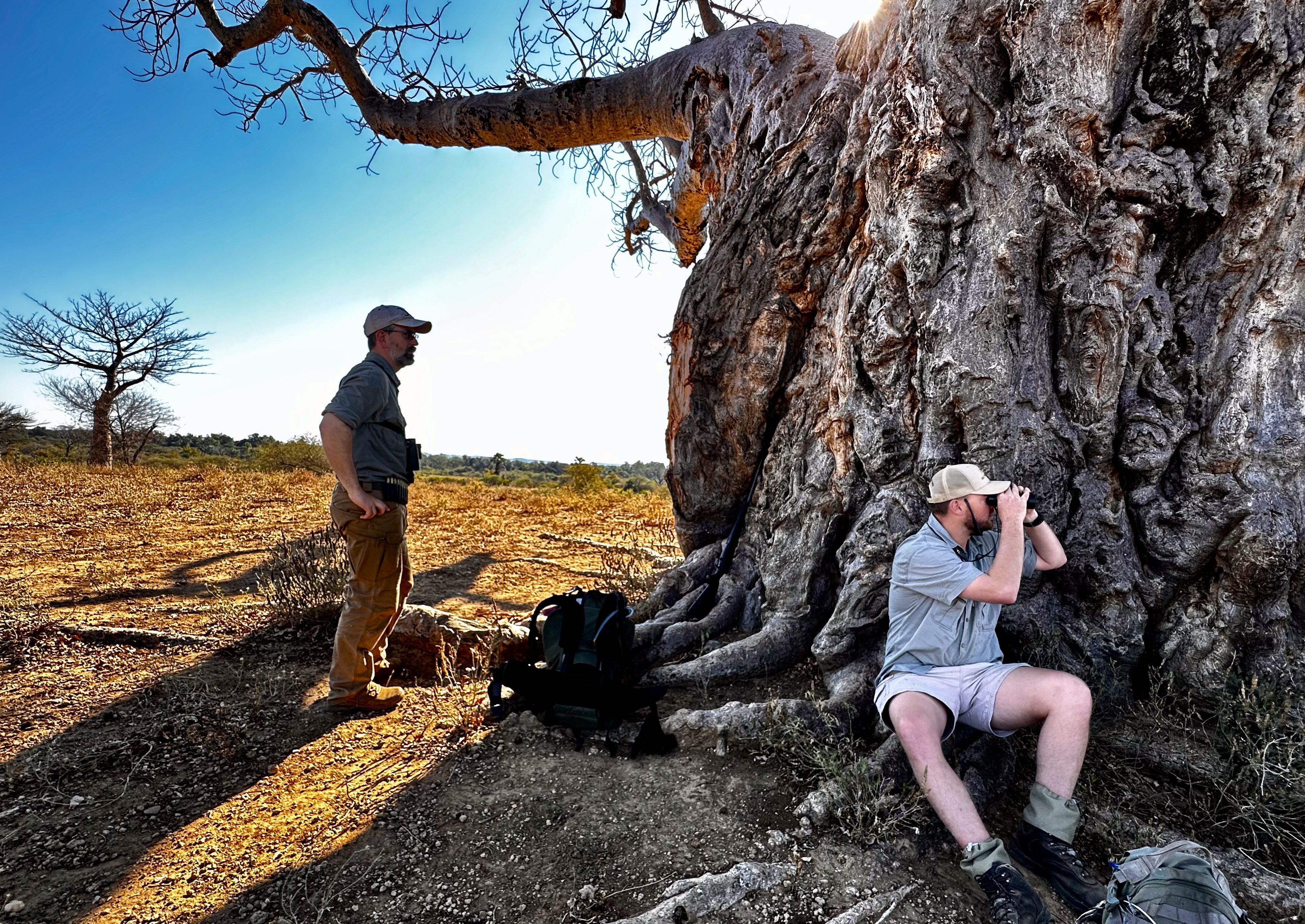
One of the many signature baobab trees found in the Pafuri section of the park. (Photo: Angus Begg)
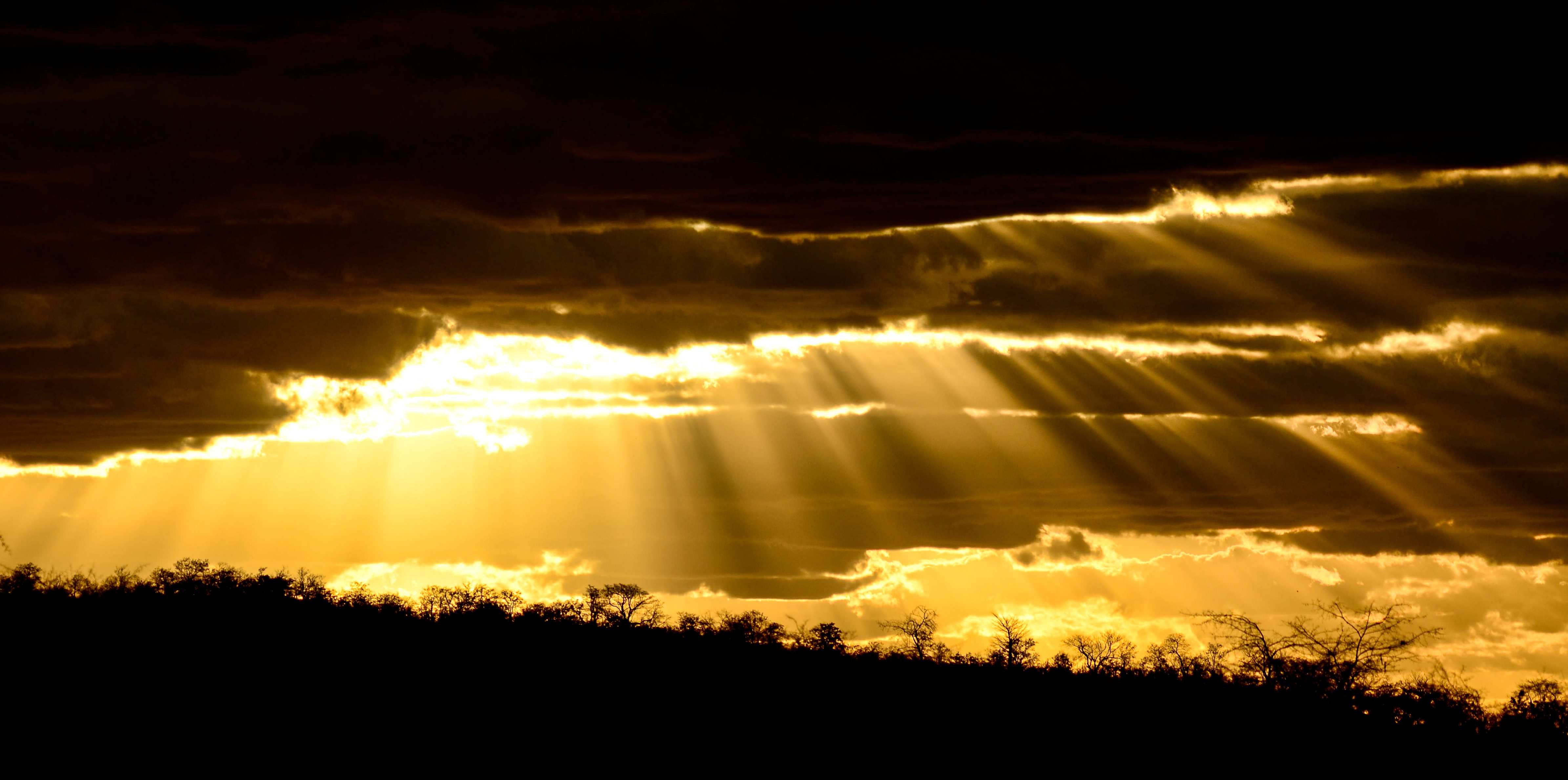
There is no substitute for the practical lessons gained from walking in the bush. On the way back this sunset seen from Manqeba lookout, we encountered elephant and buffalo herds. (Photo: Angus Begg)
Safety, passion and detail
“I suppose it’s too dark to get out and help him,” I ask Visser, intentionally forsaking the question mark. In this thick riverine bush, there was no way anyone was getting out of the vehicle.
I think of the student ranger who got out of the vehicle carrying his clients on a bridge near the park’s Malelane camp, only to be killed by a sick, hungry leopard. You cannot be too careful where wild animals exist in their natural environment.
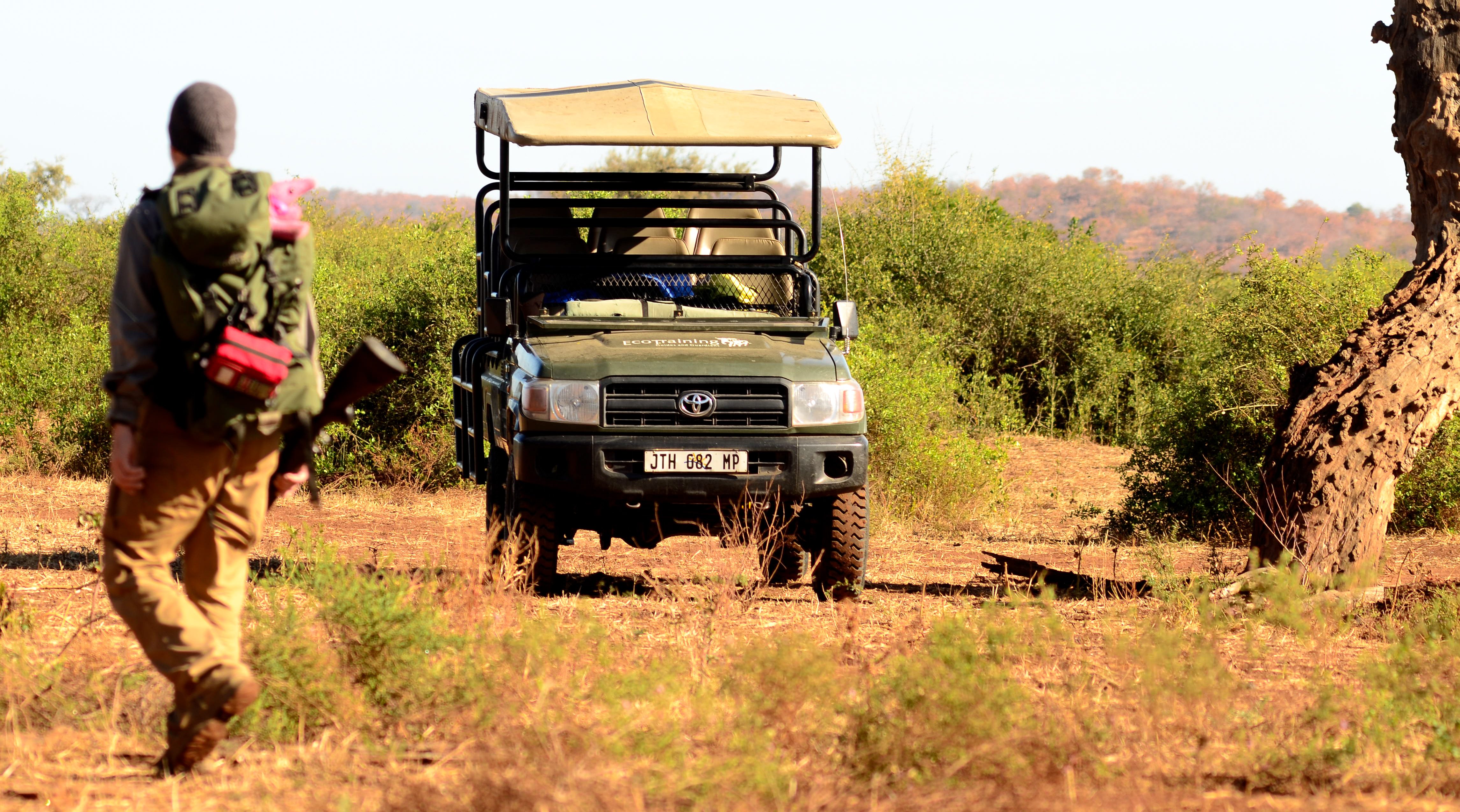
Parked at one of the many pans that dot the Limpopo floodplain. The Pafuri is section is large, sometimes requiring that we drive to a location and walk. (Photo: Angus Begg)
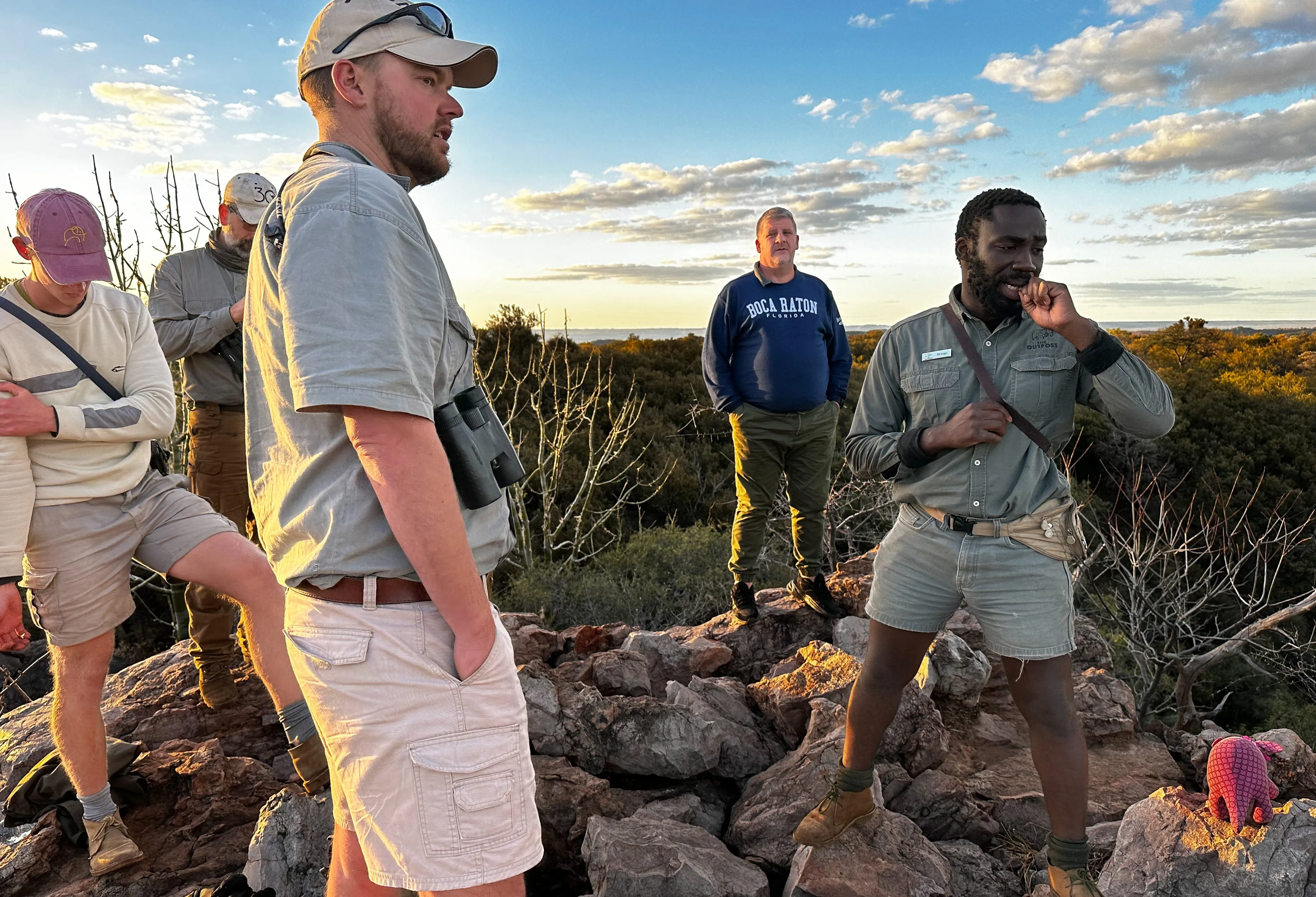
Course instructor Jasper Visser (with a guide and guests from the lodge) at the magnificent Lanner Gorge viewpoint. (Photo: Angus Begg)
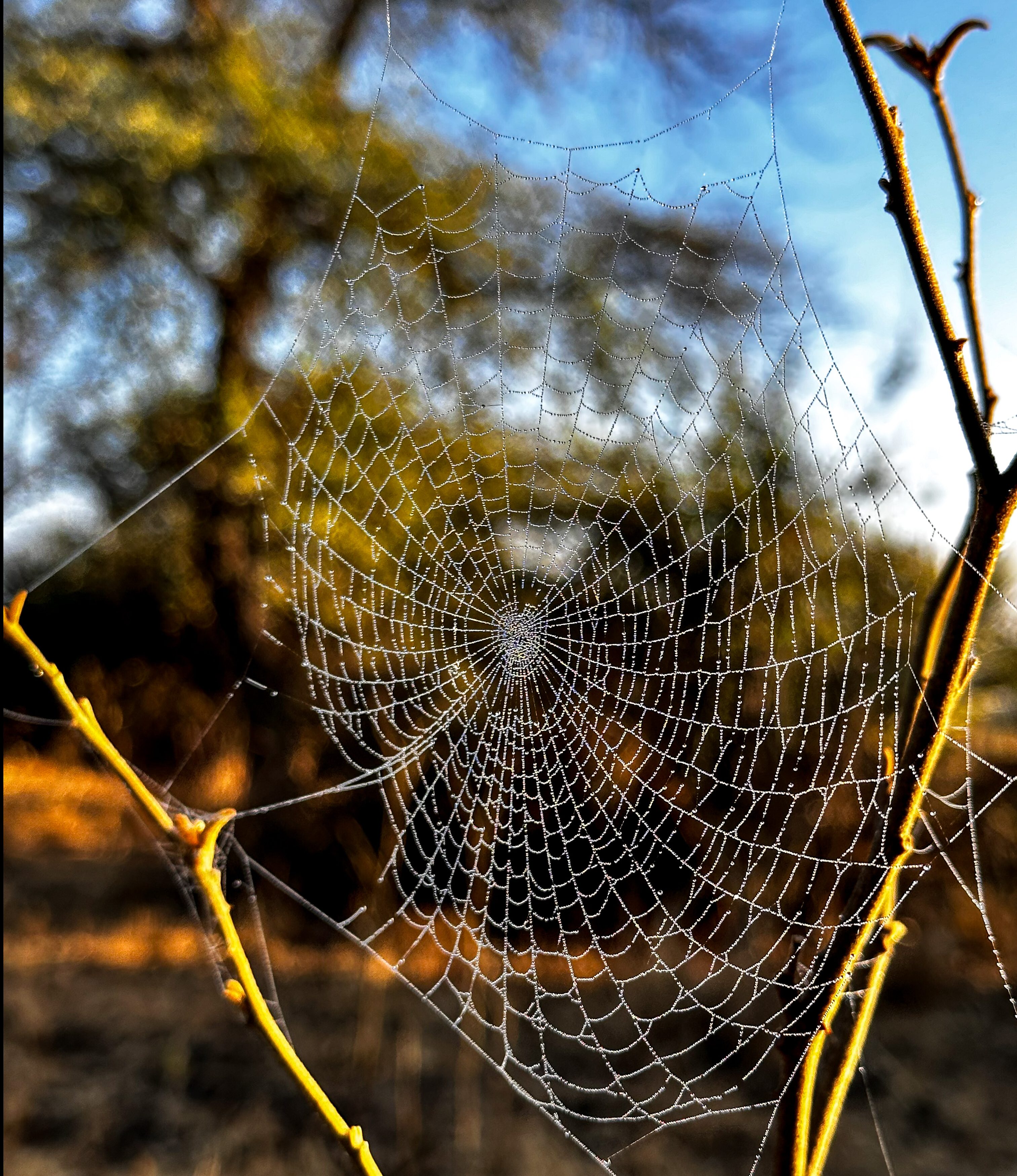
An orb spider’s nest, a typical natural phenomenon encountered on a morning walk. (Photo: Angus Begg)
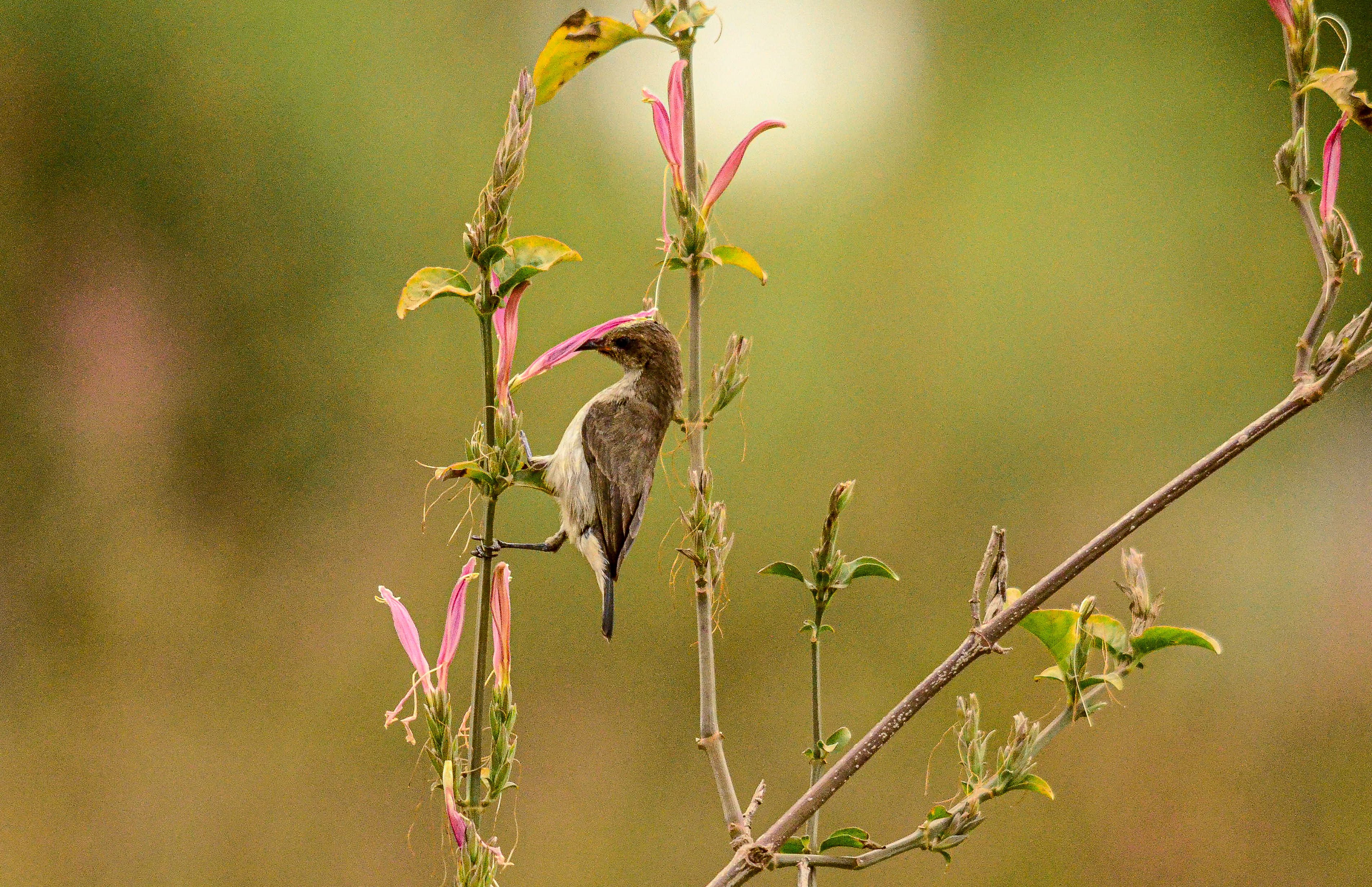
Female White-bellied sunbird on the sweet-scented anasothes, commonly known as ‘Jam mouth’, at Crooks Corner. (Photo: Angus Begg)
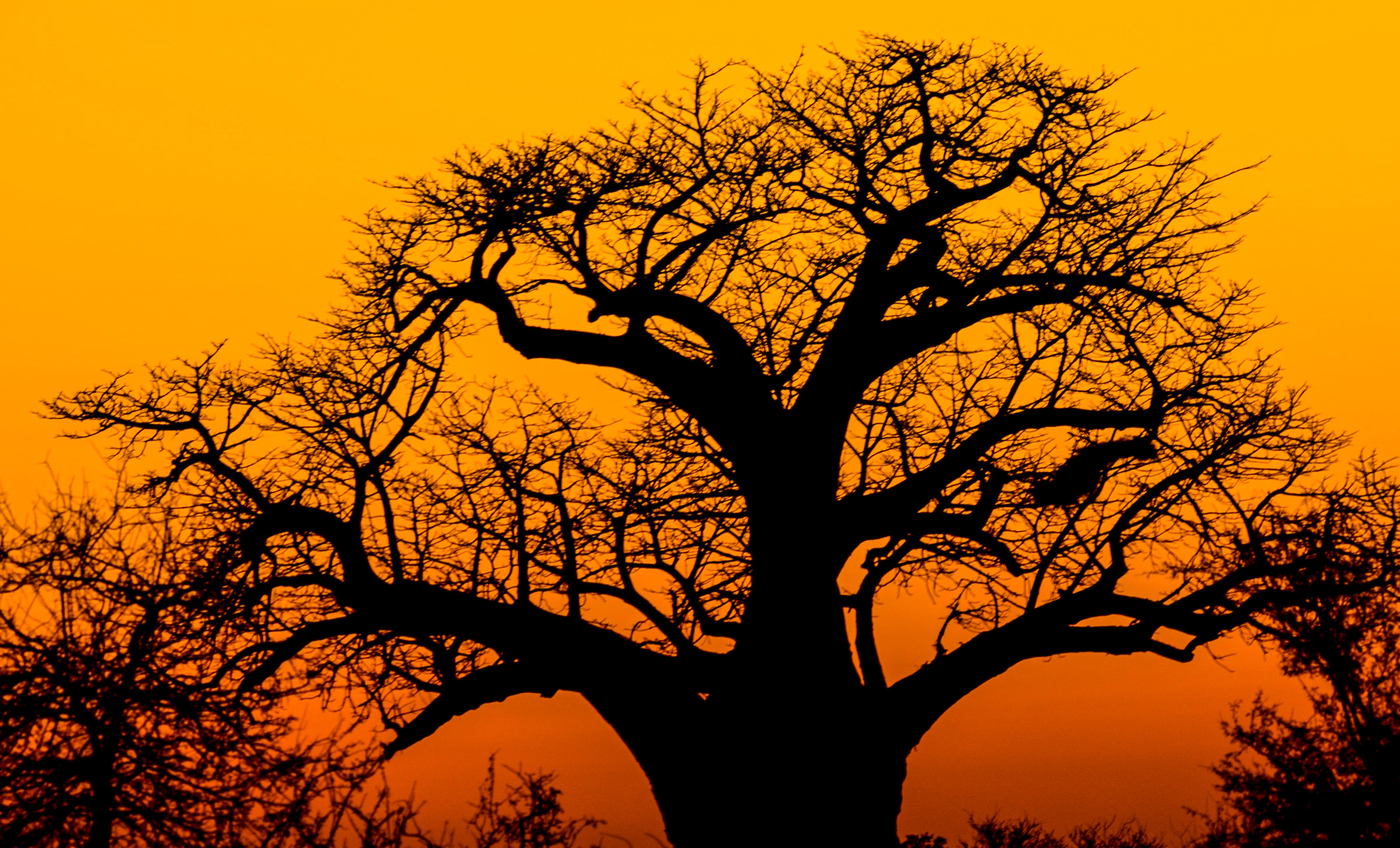
The baobab trees of Pafuri assume a different stature come sunset. (Photo: Angus Begg)
As for the bats and the trees, they speak to what this course is about and why it was designed. A year’s guiding course is simply too long for working folk, yet the fact that so many courses are run throughout the year clearly means there is a demand.
I think of my own passion for trees, birds and biodiversity, the interconnectedness of everything, and my desire from a young age to be both a game ranger (after reading Nick Steele’s Game Ranger on Horseback) and a journalist. After 30-odd years, I feel I’ve done a bit of both, but I never got to formalise the bush knowledge accumulated in that time.
Not too long ago, I saw a clawed track on Mabibi Beach in northern KwaZulu-Natal, near where turtles had been hatching in the hours of darkness; some time before that I had noted a similar track on the western edge of the Cederberg, three hours from Cape Town. Badger, brown hyena, porcupine … had been my best guess on both occasions. I’d isolated which creatures were found where, and would have looked in my book on spoor, but — naturally I suppose, given that I double-up as a private guide — I wanted to be as close as dammit at first glance.
It’s the same with trees, and I know many bush enthusiasts who feel the same. It’s a source of mild irritation when trying to remember trees of the Western and Eastern Cape, the Waterberg, Drakensberg and the Lowveld. Happily, it’s the sort of thing I could ask on this course, repeatedly (without fear of irritating other guests), like why these mopane trees over here are darker than those over there, understanding why the baobab can’t be ring-barked … and walking through those magical fever tree forests, Vachellia xanthophloea.
Reedbuck Pan
We’d tracked a bull elephant in the fever tree forest a 20-minute walk from camp in the morning, with Zimbabwe about two clicks away across the dry Limpopo. However, as in Dalene Matthee’s classic, Kringe in ’n Bos, aka Circles in a Forest, set in the Knysna forest, we eventually found his tracks over ours, as if he was toying with us. We never found him.
Late that afternoon, we drove to Reedbuck Pan and started walking. The cackle and squawk of the herons, storks, ducks and other waterbirds usually heard here at sunset were absent. In their place was the calming presence of a breeding herd of elephants in the forest, and two zebra out in the open next to the water, a magical, primordial scene.
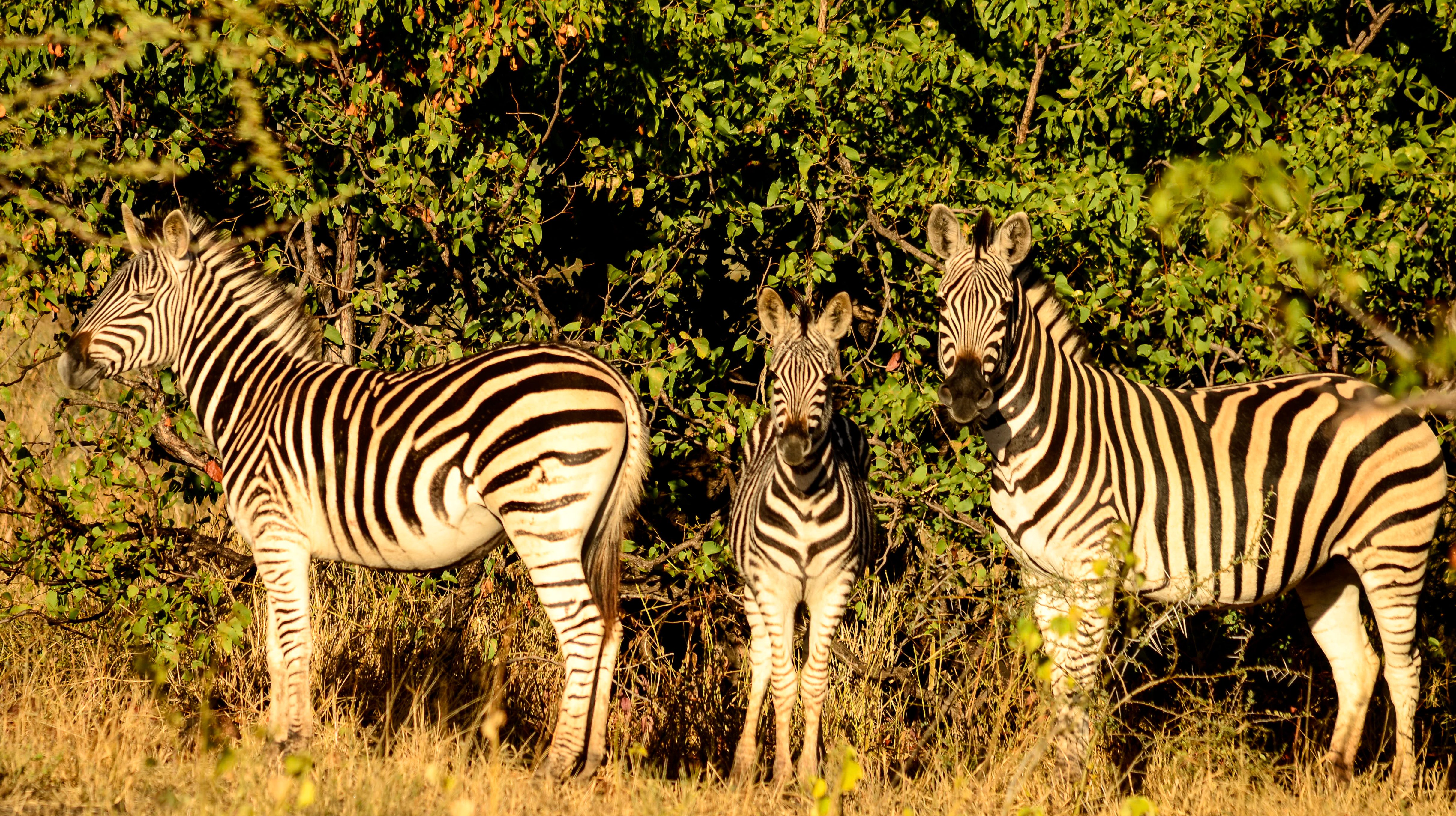
Apart from elephants and buffalo, zebra (pictured), kudu, eland, impala are the most common game to be found in the Pafuri region, with hyena the dominant predator. (Photo: Angus Begg)
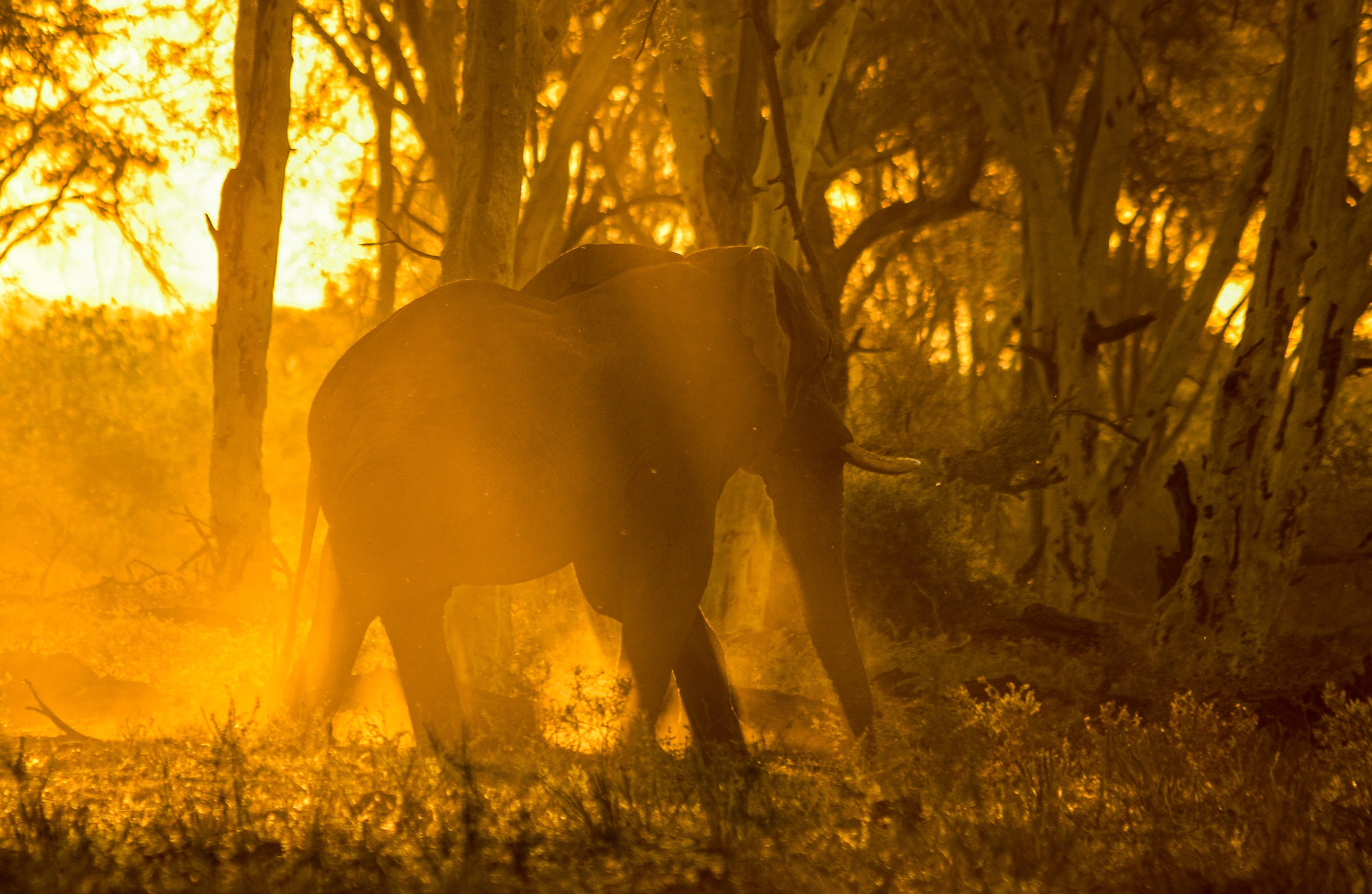
One of the most iconic Kruger images is that of elephant herds moving through a fever tree forest. It’s not a guarantee, but we walked and we found. (Photo: Angus Begg)
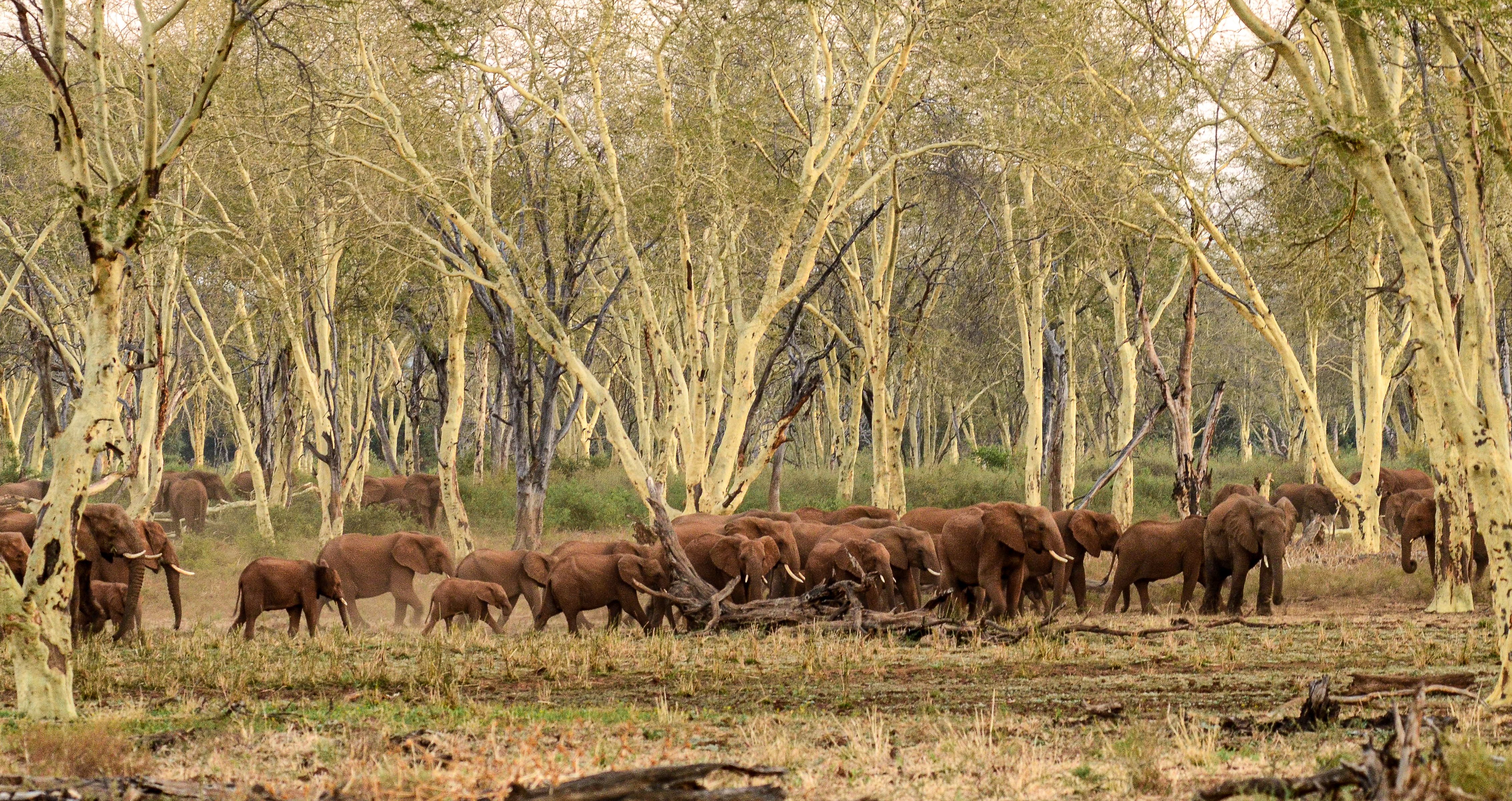
Sunset at Reedbuck Pan. (Photo: Angus Begg)
The wind was in our favour, so we walked quickly and quietly, diminishing the distance between us.
We changed position twice, slowly, gradually getting closer to the main herd — now backlit by the fast-setting sun, knowing that they knew we were there, gaining their trust. The matriarch came to check on the still body that the six of us presented, requiring us to sit, presenting less of a threat.
Thus we sat and watched, leaning against a fallen fever tree, observing the seemingly endless procession of pachyderms coming from the forest. First two, then four. We counted over 100 elephants by the time we left.
Appreciation of “the bush” happens on many different levels, a bit like a blanket with its various threads. It is the guides and trackers who are entrusted with making a difference for their guests at South Africa’s safari lodges — mostly visitors from overseas — translating the experience for their consumption.
The same goes for South African families. Interested parents share with their little ones the magic of nature and the bush, laying the groundwork for future respect and understanding.
This 14-day course is designed for those who dreamt of being a guide as a child, but life interrupted. Or for those who simply want to better enjoy and understand the bush on their next visit. DM
EcoTraining Makuleke is a community-owned concession in the remote and biodiverse Pafuri region of the northern Kruger Park. Other more standard professional guiding courses and wilderness trails can be found at Field Guides Association of South Africa.


